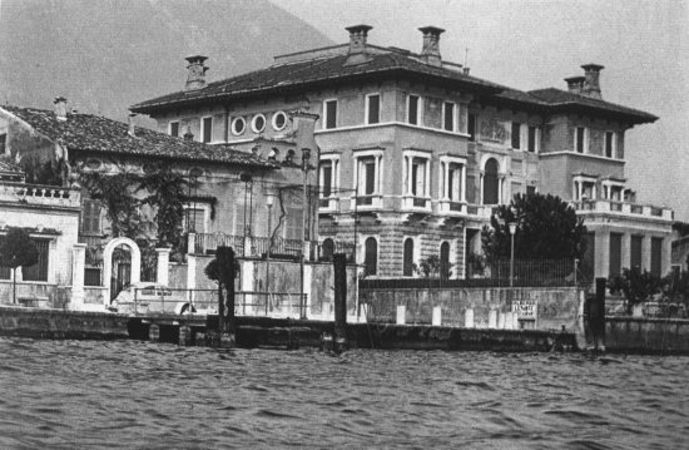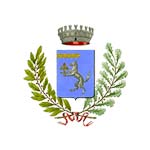Gargnano and the Headquarters of the Italian Social Republic

Gargnano and its hamlets constitute a rich, authentic open air museum.
There are many facets to explore here: from the artistic and naturalistic, to the literary and ethnographic, and the architectural and religious. Finally - and indisputably - the passage of history that occurred within the area is relevant and evidenced, though at times merely as a trace.
For example, the Risorgimento period of Italian unification (between 1848 and 1866) merits further attention, while even greater coverage of the Great War years (1915-1918) could be given, as it trod throughout the area and left its footprints. In reading the territory its history is revealed, which can assist visitors in more fully appre-ciating former times and places. Though it is challenging to dedicate time for walking tours in modern itineraries, when approached in the right way and including accurate facts, more interest in an area is created and shared.
Under the lens of history, the story of those eighteen months - from autumn 1943 to spring of 1945 - continues to be problematic and in some respects elusive. It was a period that wit-nessed Gargnano become the capital of the Italian Social Republic (the ISR), a title equivo-cally attributed to nearby Salò after the war. The Republic did not do much that was memo-rable, it is true, though it did force the Gargnanese and the Gardesani to live a dangerous coexistence with a decaying regime, which forced the people to assist it as it took its last breaths. The phase and its circumstances are both cemented in time and indelible from history, as there are also the courageous fragments of those who knew how to fearlessly oppose the robbery of democracy. They are incidents that deserve to be illustrated and told, even if on-ly briefly, in the belief that it is best to share the knowledge of places, people and events.
A simple route is thereby proposed, to be covered on foot in just a few hours or by bicycle in an even shorter amount of time. It will be useful in facilitating the understanding of some salient aspects of the months between 1943 and 1945. It starts in Bogliaco, where there is no shortage of parking, and crosses the hamlet and the hamlet of Villa, which is the county seat of Gargnano. It finishes at Casèl dé la Tor, which is located a couple of kilometers from the town of Gargnano, near the first tunnel. The route from Bogliaco to Casèl dé la Tor is a little over four kilometers long and is most-ly flat, with a slight climb during its final section.
The Palazzo Bettoni Cazzago Building - Presidency of the Council of Ministers of the ISR
This is the historic building of greatest interest in the Municipality of Gargnano. An excel-lent view of it can be had from the Homerus Project marina, which overlooks the lakeside courtyard of the building. There is also the possibility of walking alongside the entire length of the building (which carries the name of its owners and is their private property) on the state road, proceeding northwards during the walk. The eighteenth-century building, with an Italian-style garden in front, was the most significant institutional building of the ISR. It was requisitioned along with other houses and hundreds of simple rooms within the homes in town. Much work on the Palazzo Bettoni Cazzago Building was necessary and, in the summer of 1944, even the garden was transformed into a war vegetable garden.
The Presidency of the Council of Ministers of the ISR took office in the building in October 1943 and gathered here on fifteen occasions, out of a total of seventeen. The venue for the meetings was its splendid library. In April 1945 U.S. troops from the 10th Mountain Divi-sion occupied the building. In the frantic moments that accompanied the end of the conflict a considerable amount of documents and art objects disappeared. The items had been brought from the Palazzo del Viminale Building in Rome, which was the seat of the Council of Ministers before it moved to Northern Italy.
The Former San Carlo Barracks - The Headquarters of the Republican National Guard
Proceeding from Bogliaco towards Villa di Gargnano, a series of crumbling buildings (which are state-owned) surround a very large courtyard just beyond the roadway of the Gardesana.
These former barracks (named after Leonida Magnolini) are located in the “San Carlo” area in memory of the bishop who visited these places in the summer of 1580. Of little touristic value, they do, however, deserve attention for their architecture and history. While limiting our interest to the twentieth century only, we can emphasize their use as barracks in the ear-ly 1900s: from here the Seventh Bersaglieri departed for Valvestino at the beginning of the First World War.
During the twenty year Fascist period the building became a heliotherapy colony, then had the Alpini of the Tridentina Division (Vestone, Valchiese, Verona) settle in at the beginning of the 1940s, before they were sent to Russia in the summer of 1942. Between 1943 and 1945 the men of the Republican National Guard were stationed there and also, for a few months, the Tenth Assault Vehicle Flotilla. When peace returned, refugees from various places were welcomed here in subsequent peri-ods, including: the Istrian-Dalmation exodus, following the floods in Polesine, and the ex-iles from Tunisia and Libya. The property, abandoned for some time, has welcomed avant-garde art forms, sporting as well as economic activities, initiatives for solidarity and the offices of public entities.
The Palazzo degli Uffici (Villa ex Orsoline) - The Secretariat and Offices of the Head of Government
After crossing the hamlet of Villa, you enter the historic center of the county seat. Just after the marina, you will find yourself in front of the building that was the real operational cen-ter of the ISR, the heart of the regime. Built at the end of the nineteenth century, in 1943 it housed a few dozen young women who were doing their studies and were entrusted to the Ursuline nuns. It is now a branch of the Università degli Studi di Milano.
The requisition took place towards the end of November 1943, with the military destination of Palazzo degli Uffici, as the Allies defined it after the Liberation. Here the two secreta-riats (the Politica and the Particolare, which were later unified) of Mussolini were located, as well as the office of the Head of Government and the rooms of the two German officers in charge of monitoring the head of Fascism. Mussolini was aware of their role, as was re-flected in his letters addressed to his lover, Clara Petacci, who was residing on the Gardone Riviera at Villa Fiordaliso, just 12 kilometers from Gargnano. Mussolini rarely appeared on the terrace overlooking the mountain and never gave speeches. Control over the building was jointly entrusted to Italian and German soldiers.
Villa Feltrinelli - The Private Residence of Benito Mussolini and Rachele Guidi
Continue walking on the municipal road that leads to the hamlet of San Giacomo for 700 meters until you see Villa Feltrinelli on the shore of Lake Garda, which was transformed in-to a luxury hotel twenty years ago. The building dates back to the late nineteenth century and was where Mussolini was brought to from October 8, 1943 until April 18, 1945. Musso-lini did not like the lake or the area and made no secret of it. In rare circumstances he left Gargnano, though all his attempts to move elsewhere failed. He confessed that he had been relegated to a place out of the world, far from the rooms of politics and war strategizing.
Villa Feltrinelli was surrounded by a series of buildings, all requisitioned and occupied by the military, who created a belt to guarantee the safety and control of the the Duce, who was aware of the situation. The building was camouflaged in a dark green-gray color, like many other buildings potentially at risk. The original turret on the left (a few meters higher than the current one) was equipped with an anti-aircraft gun, but was demolished in January 1945. The Fascist leader lived with his wife, Rachele Guidi, and their youngest children, Romano and Annamaria, in addition to a swarm of guests and soldiers on guard.
Al Casèl dé la Tor - The Site Where the Hero Mario Boldini Was Killed
The hamlet is located a short distance from Villa Feltrinelli, which seems almost to be a pa-radox. From the villa, walk towards Gargnano, then take the state road and, proceeding with caution, continue for just over a kilometer in the direction of the tunnels. A hundred meters before the first tunnel, a small road branches off to the left and leads towards the mountain. Take that small road about thirty/forty meters to a secluded place where there are some benches where one can sit and reflect. Here a 21 year old, Mario Boldini, was killed. He was one of the first partisans to be captured in the Brescia area and, as fate would have it, he was shot a few hundred meters from the villa that housed the head of the regime, who was kept in the dark about the fact. The site, surrounded by greenery, was reclaimed a few years ago and is a destination for historical themed excursions. It gives space for meditation and also offers a good view of the hill above and towards Lake Garda.
Bruno Festa


 OFFICE
OFFICE


